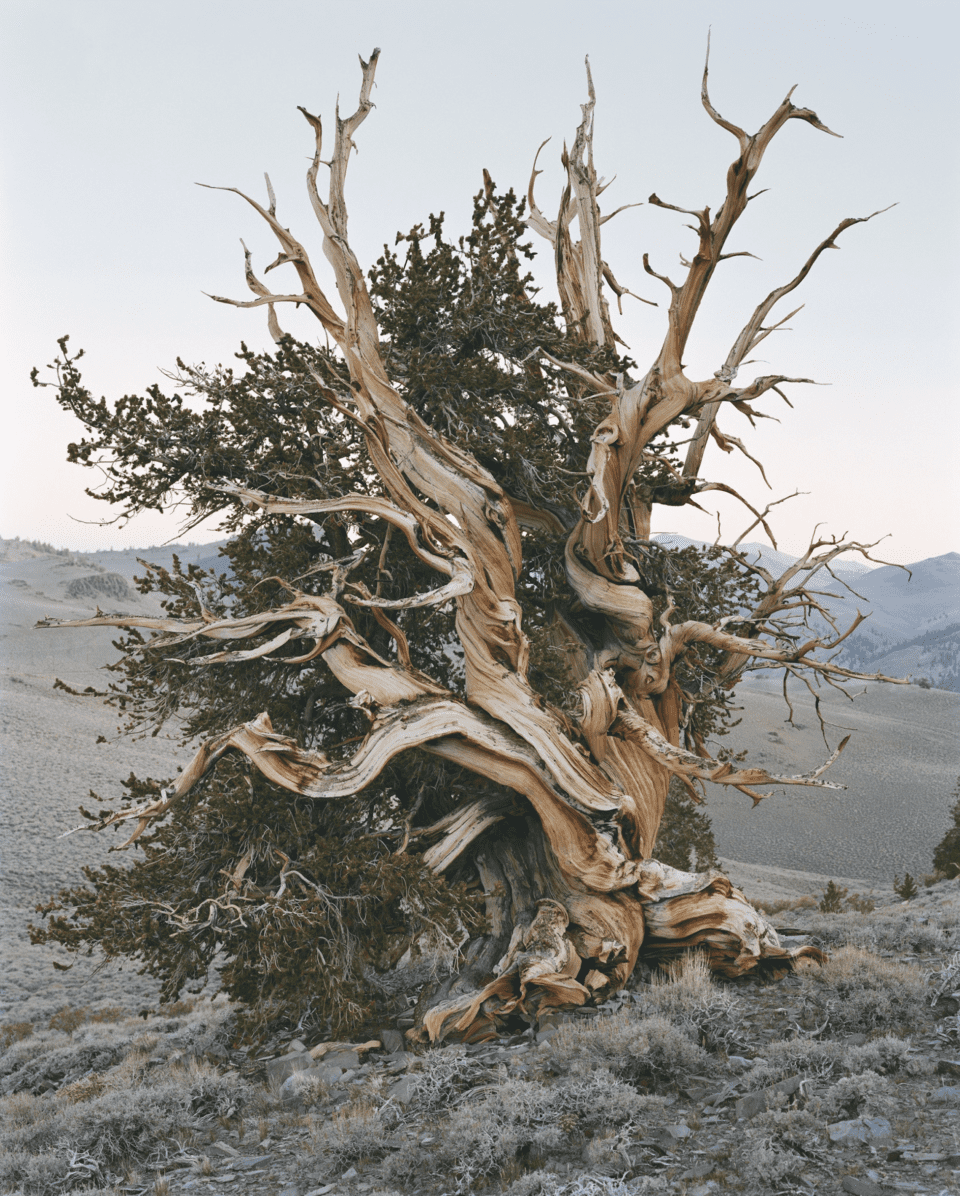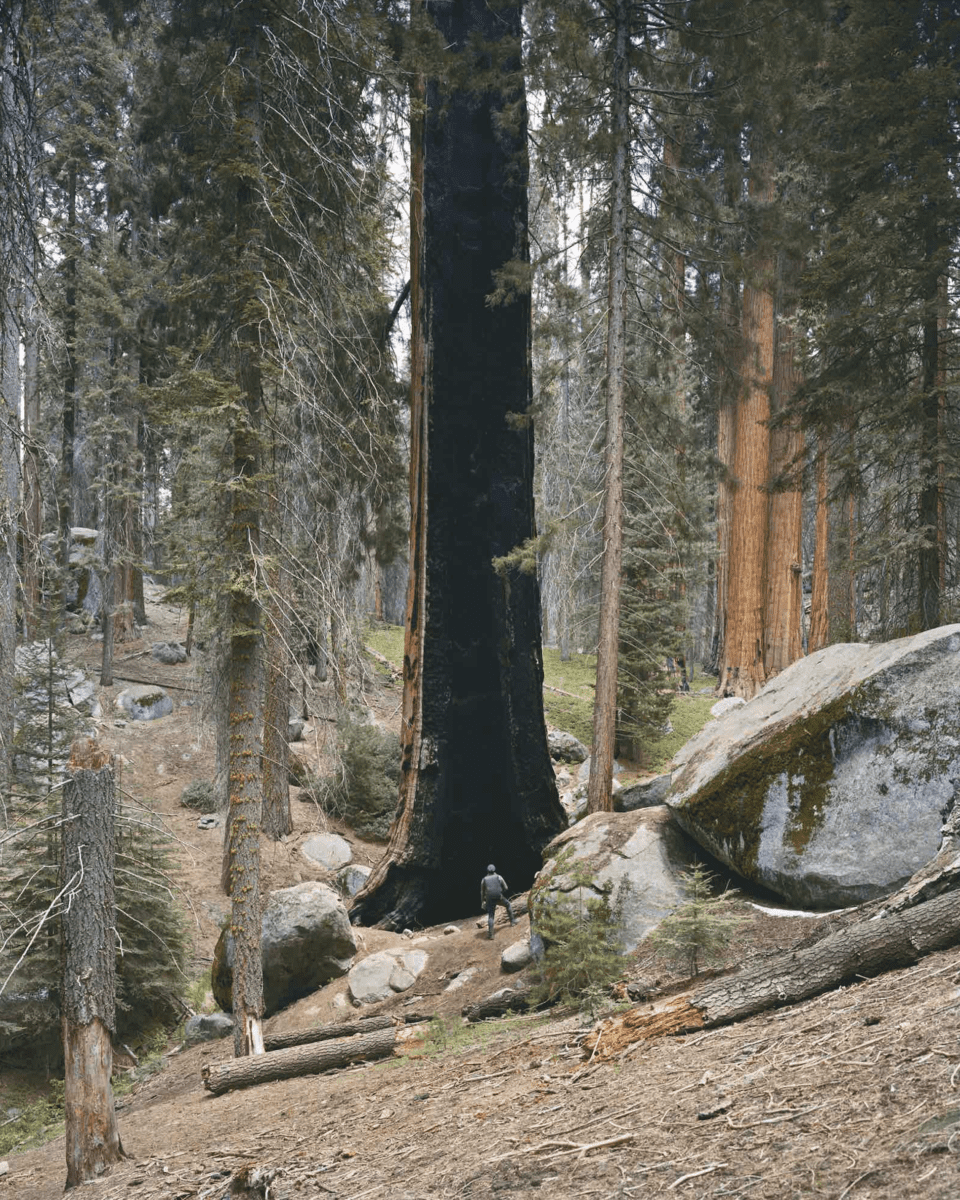Hundreds of years before Aristotle began tutoring Alexander the Great, a sequoias seedling pushed its roots into the California soil. In the White Mountains of this US state, the oldest living tree is a Great Bristlecone pine, believed to have a lifespan of over 5,00 years. These ancient behemoths can feel like something that has stepped directly out of a J R R Tolkein novel, their gnarled and aged bark witness to great swathes of human history. But the ancient woodlands, known as old-growth forests, are not a relic of a bygone era but, in fact, are vital to securing our future. Compared to younger trees, they support greater diversity of life, hold cleaner water, and host a communication network of fungi that relay messages between plant roots. This makes them vital in ensuring the continuity of biodiversity and thriving natural landscapes, as well as a key part of the fight against the climate crisis. Mitch Epstein (b.1952) has made these the focus of his new exhibition at Yancey Richardson Gallery. Old Growth continues the artist’s career-long exploration of American culture and the nation’s fraught relationship with the natural world. It includes photographs taken by Epstein between 2017 and 2024, as he travelled across the US documenting some of the country’s most ancient trees. The images create a sense of awe-inspiring wonder at the scale and might of the colossal trunks and swaying branches, reminding us of the key role that trees play in preserving and protecting our planet.

Visitors to Yancey Richardson Gallery are immersed in Epstein’s work. His large format camera describes the exquisite details of our arboreal ancestors, foregrounds the sculptural beauty of trees and the multiple dimensions of biosystems that have flourished in the wild for millennia. The majesty that Mitch Epstein evokes in his work only serves to reinforce the peril in which they currently exist. Old-growth forests are threatened by wildfires, droughts, excessive heat, storms, pests and logging. In fact, humans have destroyed more than 95 percent of America’s irreplaceable original woodland. On Earth Day, April 22, 2022, President Joe Biden visited Steward Park in Seattle. The area is home to the remnants of an old-growth forest, and Biden was there to sign an executive order mandating the first inventory of the nation’s mature forests and requiring federal scientists to detail the specific threats posed to each. Yet, despite these measures, dozens of major logging projects are being advanced across the US, including the felling of 130,000 acres of old-growth forest in Plumas national park in California – an area roughly the size of Chicago. Epstein seeks to remind viewers that the destruction of these trees is not only a travesty in terms of the destruction of landscape and habitat for wildlife, but also for our own existence. They are crucial for human survival in the struggle against climate change as they hold significantly more carbon than replanting saplings. Studies conducted in Oregon showed that the biggest 3% of trees accounted for 42% of forest carbon. “It is not about how we can save trees”, says Epstein, borrowing from ecologist Suzanne Simard, “it is about how the trees might save us.”

Epstein’s series features only one person. A figure has his back turns to the camera, gazing upwards at a towering tree on the Congress Trail in California, its trunk reaches skyward and disappears out of the shot. The juxtaposition between the two once again reminds us of the ancient nature of the woodland. Long, hairlike plants drape of the branches and trunks twist and splinter. These are unquestionably ancient living things. In this, we find the other key idea explored in this exhibition – time. The show is underscored by a tension between the medium of photography, which can record its subject in a split-second, and the forests depicted, which have a potentially infinite lifespan. This oscillation between the instant and the eternal, between human mortality and cosmic perpetuity, resonates throughout the exhibition. We are invited to consider the relatively short timeframe of human life, and the ultimate fragility of our existence. With this, Epstein asks us to consider how the complexity and age of the old-growth forests could help protect us all in an uncertain future.
Old Growth is at Yancey Richardson Gallery from 5 September: yanceyrichardson.com
Words: Emma Jacob
Image Credits:
Mitch Epstein, Maple Glade, Hoh Rain Forest, Olympic National Park, Washington, 2017. From the series Old Growth. Archival pigment print, 36 x 45 inches. Edition of 6.
Mitch Epstein, Ancient Bristlecone Pine Forest, California, 2022. From the series Old Growth. Archival pigment print, 72 x 58 inches. Edition of 6.
Mitch Epstein, Congress Trail, Sequoia National Park, California, 2021. From the series Old Growth. Archival pigment print, 45 x 36 inches. Edition of 6.





